Ring Styles
The most common ring style is the engagement ring, but did you know there are countless others? Diamond rings are not limited to engaged couples, and gemstones are not limited to your birthstone. This slideshow highlights some of the best ring styles based on their popularity and significance. There will be some you know well and some you’ve never heard of. Each ring type will highlight some interesting facts and must-know information.

1. Antique Ring
Antique rings are becoming more popular as more antique dealers take to social media to share their unique beauty. Within the antique ring category, there are dozens of other ring styles to consider. However, for a ring to first be considered antique, it must be around 100 years old or older.

2. Armor Ring
Armor rings have become more widely available the past couple of years. With designers like Vivienne Westwood setting the trend, these rings have become a style staple. For a ring to be considered an armor ring, it must cover the middle knuckle and span the majority of the finger. Some styles look more utilitarian whereas others can be very lacy and feminine.
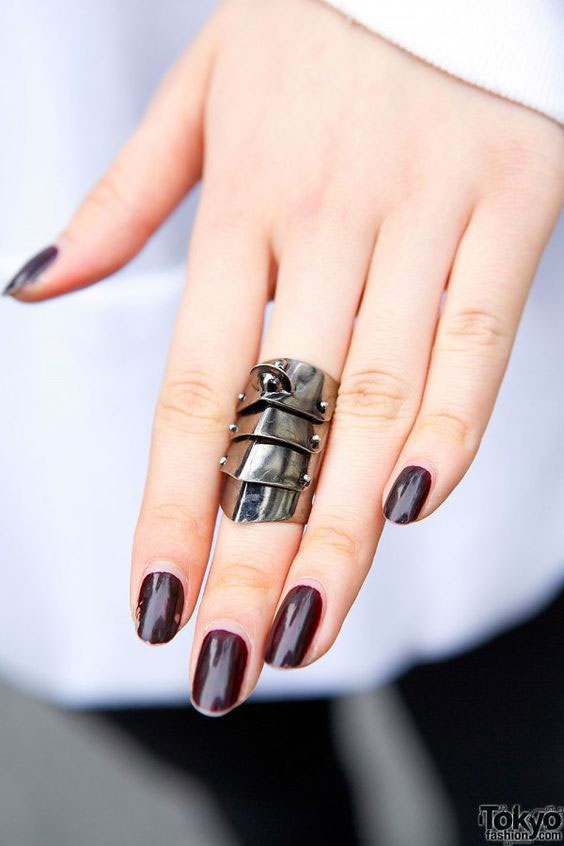
3. Birthstone Ring
This citrine ring from Amazon is as simple as birthstone rings come. Generally, a birthstone ring represents the wearer’s birthday. They come in solitaire form and usually have one gem focal point. If you were born in April, your birthstone ring can begin to look like an engagement ring since your birthstone is a diamond. That is either a good thing or a bad thing, depending on your budget.

4. Cameo Ring
Most cameo rings on the market are either antique or vintage. Within the cameo jewelry ring style, there are many other types that differentiate one cameo from another. Not sure your cameo is the real thing? We have a guide for that.
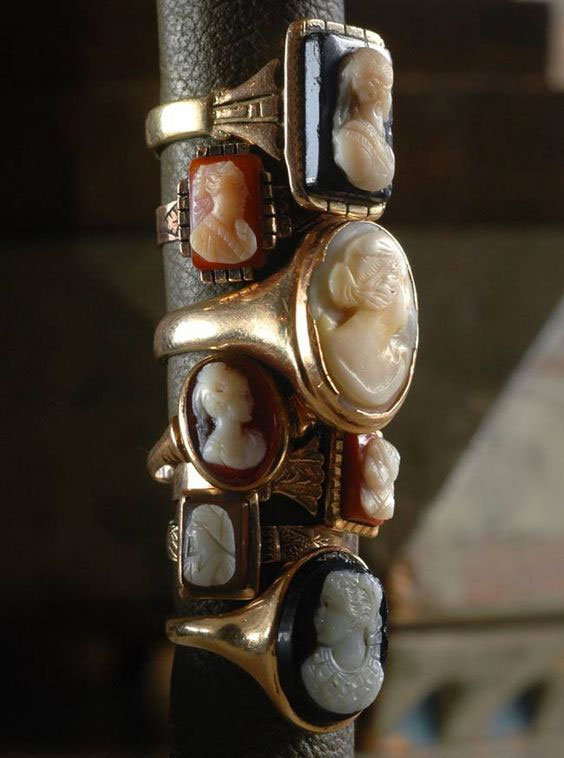
5. Claddagh Ring Styles
The Claddagh ring is about as traditional as the modern day engagement ring but with a long history. Since the 1700’s, these Irish rings were a symbol of love and friendship. They are a part of the ring class known as “fede” meaning hands. Fede rings use joined hands and have been an important symbol on rings since ancient Roman times.
Wearing your Claddagh ring in different ways indicates different relationship statuses.
On the left-hand ring finger, an upward pointing heart indicates the wearer is engaged. A downward heart toward the wrist means the wearer is married. On the right-hand ring finger, an upward pointing heart indicates the wearer is single. A downward heart toward the wrist means the wearer is in a relationship.

6. Class Ring
Class rings are a form of signet ring used to depict the year you graduated from school. These ring styles might only seem important to the initial owner, and many class rings that have been passed down to future generations have been melted for their gold value. However, when class rings are as intricate as this one, how can you possible melt them? Their value is worth much more than the metal scrap value on the antique jewelry market.
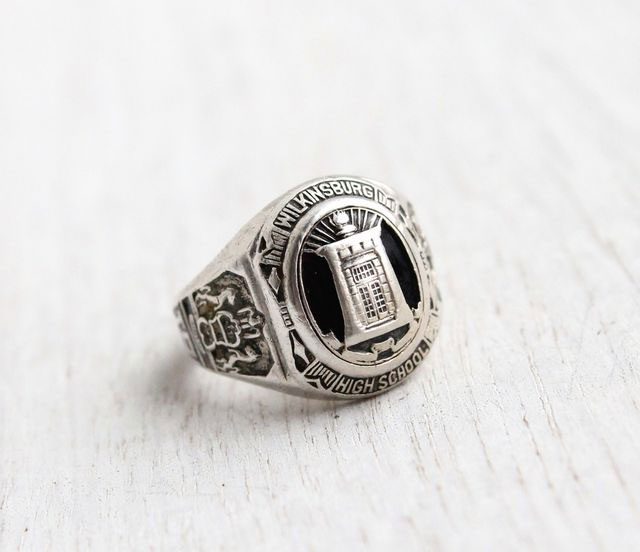
7. Cocktail Ring
Cocktail rings became bigger than big in the 1940’s. Basically, a cocktail or dinner ring is any ring you can see from across the dinner table. Think large gemstones or diamonds that are flashy and conversation pieces. Becky from Becky from Diamonds in the Library shares some of her favorite amethyst cocktails rings from The Antique Guild using her prized macro lens.

8. Conversion Ring
Conversion ring styles are very popular due to the decline of hairpins and brooch wearing. There are a plethora of unworn antique stick pins and brooches on the market. Since these discarded pieces usually have charming focal pieces, many antique dealers have been converting them into more wearable rings. Here Ageless Heirlooms highlights some popular conversion rings from Trademark Antiques.

9. Engagement Ring
The engagement ring needs little explanation. Though the exact origins of the engagement ring are unknown, there have been links to ancient Egypt, Rome, and Greece.
As far back as 200 years ago, diamond engagement rings were reserved for rich and noble families. Once diamonds became less scarce during the late 19th century, diamond engagement rings became more accessible and popular.
After the Great Depression, diamond engagement ring demand declined and the price of diamonds collapsed.
In response, De Beers began a momentous marketing campaign that set the scene for today’s diamond engagement ring demand.
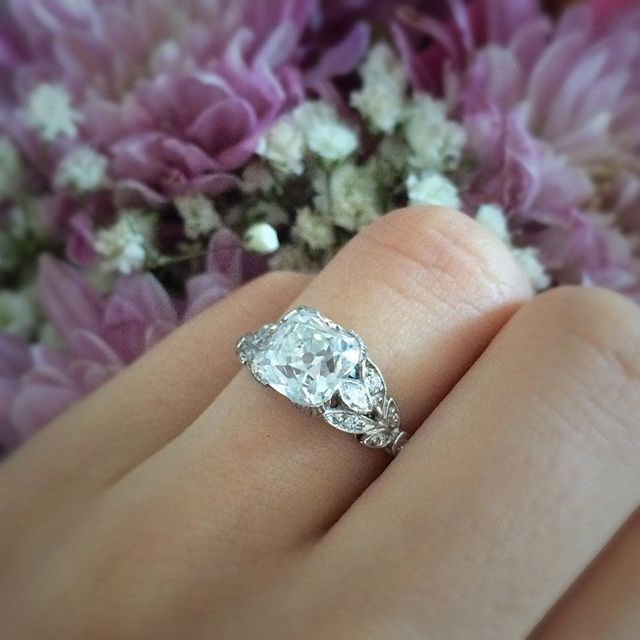
10. Gimmel Ring
The “fede” Gimmel ring has become a prized part of the antique jewelry world. These puzzle rings showcase two interlocking hands that open to reveal a heart. Due to their recent popularity, more jewelry designers are recreating these heirlooms. These rings, also known as Gimmal rings, were popular in Europe during the 16th and 17th centuries and were often given as engagement rings style (then referred to as betrothal rings).
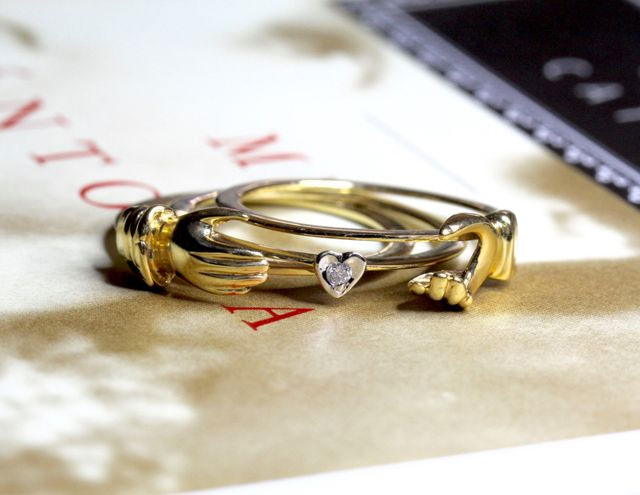
11. Masonic Ring
A Masonic ring is a type of signet ring worn to represent freemasonry status. A Freemason is a member of a fraternity of sorts. The ring shown here depicts a branch of Freemasonry known as the Scottish Rite. Each ring is rich with specifics to the original owner, like their degree and level of study. Though modern day Masonic rings styles might not be as detailed, the antique ones are prized by collectors both for their historical significance and aesthetics.

12. Meditation Spinner Fidget Ring
This type of ring goes by many names: meditation ring, spinner ring, fidget ring styles. Much like the rosary ring, we will show later, these rings are used for meditative purposes. Though they may not be religious in nature, these rings calm the wearer by allowing them to spin the loosely placed bands.
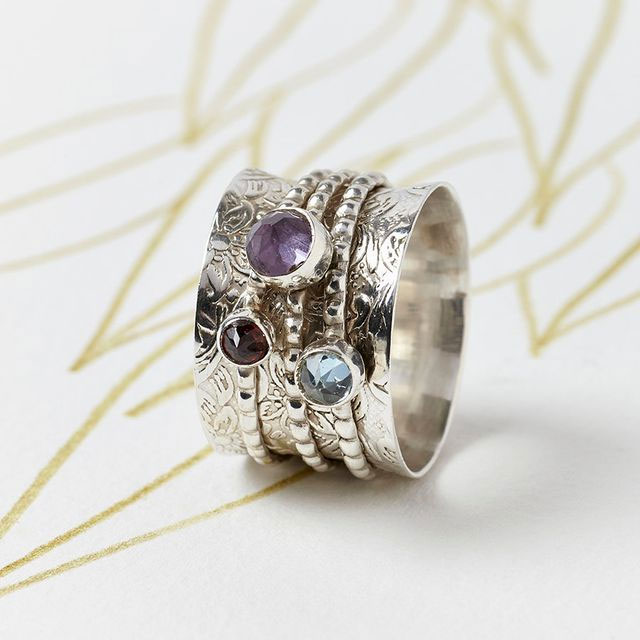
13. Midi (Knuckle) Ring
Midi rings seem like a newer ring style, but they have in fact been around for hundreds of years. Antique baby rings would be gifted to infants and then worn throughout their adult life on their upper finger much like you see here. These also go by the term knuckle ring and can be stacked or layered for a variety of different looks. This 14k gold cuff midi-ring made by Sarah Davida is shown on Danielle of Gem Gossip and has been engraved with her wedding date.
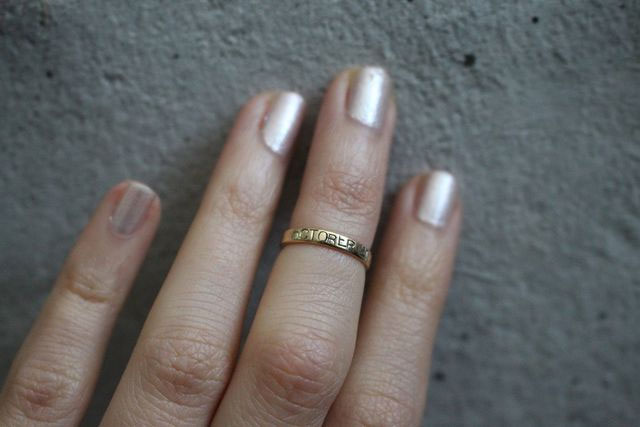
14. Mother’s Ring
Mother’s rings traditionally were one ring composed of each of the birthstones of the mother’s children. Today, mother’s rings come in a wide variety of styles. For instance, these stacking bands from Amazon are each hand pressed with the children’s names.

15. Mourning Ring
Mourning rings were popular throughout the Georgian and Victorian Eras. These rings commemorate a lost loved one and are crafted using materials like hair, jet, black enamel, pearls (symbolizing tears), and personalized engravings. This mourning ring from 1887 is engraved inside with the name ‘Tillie Weller.’

16. Multi-Finger Ring
Multi-finger rings are rings that span across two to three (and sometimes four) fingers. They can also be referred to as knuckle rings. This particular bar style is worn on two fingers and is delicate enough to layer with many other ring styles.

17. Posie Ring
Posie rings (also known as posy, posey, and poesy) are simple gold bands with poetic inscription either on the inside or outside of the band. In theory, the Lord of the Rings ring was a posie ring. Antique posie rings were popular between the 15th and 17th centuries predating the Georgian era. They are rare and expensive with most being owned by museums or collectors.
The concept of engraving rings with lyrics is sentimental and has been making its way back into modern day wedding bands.

18. Promise Ring
A promise ring is just that, a promise. Some promise rings are given by fathers to their daughters (known as a purity or chastity ring). Others are given by young couples seriously in love but not quite ready to get married. The former is a promise to save yourself until marriage, the latter is a promise to one day get married.
Promise rings are neither lavish nor full of bling. Their main purpose is symbolic, so really anything goes.
This ring has a moonstone gem accented with an infinity knot to symbolize forever.

19. Puzzle Ring
Puzzle rings are similar to the Gimmel rings in that they are comprised of more than one band. These rings piece together to create one complete ring in a way that is unique and unsuspecting.

20. Right-Hand Ring
Right-hand rings are generally more showy diamond rings. Their purpose is to highlight a woman’s independence. Rather than wait or need a man to buy her a diamond a ring, a woman might purchase her own in order to highlight her taste and financial freedom. There are no rules when it comes to a right-hand ring style other than to not wear it on your left hand and confuse your relationship status.

21. Rosary (Prayer) Ring
Rosary rings are meant to be convenient placeholders for rosaries. Antique rosary rings often have the cross protruding out of the top of the ring, making it a difficult everyday ring to wear. Modern rosary rings are more streamlined, and each raised beads helps the meditative process of reciting the rosary. Other rings to aid in prayer from other religions also exist.

22. Signet Ring
Signet rings symbolize something. In their simplest, untouched form, they are gold rings with an open flat surface that can be engraved. Basic signet rings have family initials engraved on them whereas more complex signet rings have crests and other detailing. This ring worn by Natasha Ndlovu is bare now but will eventually be engraved and passed down to future generations.

23. Stackable Ring
Stacking rings are popular both for wedding bands and everyday rings. They are categorized by their design which is thin and simple. Some stacking rings are made to nuzzle perfectly into one another and are sold in sets.

24. Toi et Moi Ring
Toi et moi rings (also referred to as the moi et toi ring) comes from the term “you and me” in French. The ring style is known for two focal stones intertwined in some way. This style was popular in the Victorian era and is said to depict two souls. The trend allegedly began with the gorgeous sapphire and diamond engagement ring that Napoleon gave to Josephine in 1776.

25. Wedding Ring
Your wedding ring styles are a simple circle that represents a forever love. They are often set with diamonds, but other colored gemstones have become popular alternatives. Just as there are many styles of engagement rings, there are equally as many wedding band styles.


